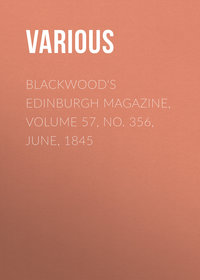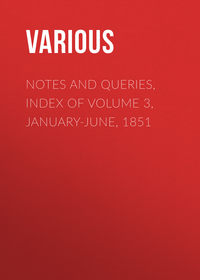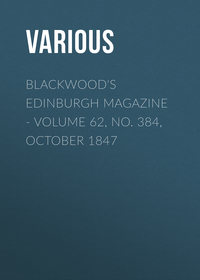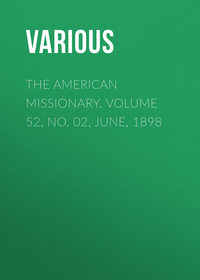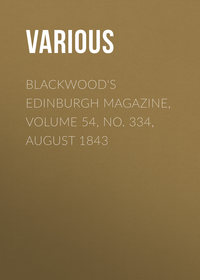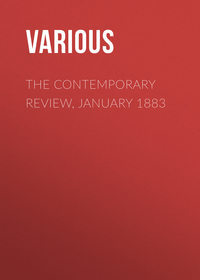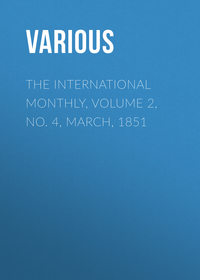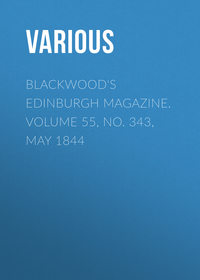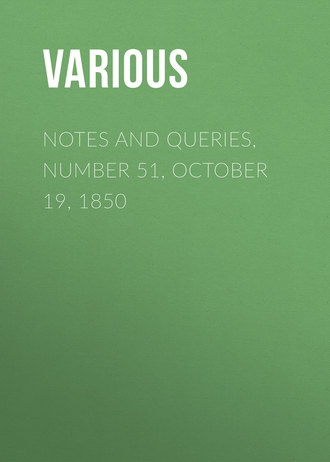 полная версия
полная версияNotes and Queries, Number 51, October 19, 1850
CAXTON'S PRINTING-OFFICE
(Vol. ii., pp. 99. 122. 142. 187. 233.)I confess, after having read MR. J.G. NICHOLS' critique in a recent number of the "NOTES AND QUERIES," relative to the locality of the first printing-press erected by Caxton in this country, I am not yet convinced that it was not within the Abbey of Westminster. From MR. NICHOLS' own statements, I find that Caxton himself says his books were "imprynted" by him in the Abbey; to this, however, MR. NICHOLS replies by way of objection, "that Caxton does not say in the church of the Abbey."
On the above words of Caxton "in the Abbey of Westminster," Mr. C. Knight, in his excellent biography of the old printer, observes, "they leave no doubt that beneath the actual roof of some portion of the Abbey he carried on his art." Stow says "that Caxton was the first that carried on his art in the Abbey." Dugdale, in his Monasticon, speaking of Caxton, says, "he erected his office in one of the side chapels of the Abbey." MR. NICHOLS, quoting from Stow, also informs us that printing-presses were, soon after the introduction of the art, erected in the Abbey of St. Albans, St. Augustin at Canterbury, and other monasteries; he also informs us that the scriptorium of the monasteries had ever been the manufactory of books, and these places it is well known formed a portion of the abbeys themselves, and were not in detached buildings similar to the Almonry at Westminster, which was situated some two or three hundred yards distant from the Abbey. I think it very likely, when the press was to supersede the pen in the work of book-making, that its capabilities would be first tried in the very place which had been used for the object it was designed to accomplish. This idea seems to be confirmed by the tradition that a printer's office has ever been called a chapel, a fact which is beautifully alluded to by Mr. Creevy in his poem entitled The Press:—
"Yet stands the chapel in yon Gothic shrine,Where wrought the father of our English line,Our art was hail'd from kingdoms far abroad,And cherish'd in the hallow'd house of God;From which we learn the homage it receivedAnd how our sires its heavenly birth believed.Each printer hence, howe'er unblest his walls,E'en to this day, his house a chapel calls."Mr. Nichols acknowledges that what he calls a vulgar error was current and popular, that in some part of the Abbey Caxton did erect his press, yet we are expected to submit to the almost unsupported dictum of that gentleman, and renounce altogether the old and almost universal idea. With respect to his alarm that the vulgar error is about to be further propagated by an engraving, wherein the mistaken draftsman has deliberately represented the printers at work within the consecrated walls of the church itself, I may be permitted to say, on behalf of the painter, that he has erected his press not even on the basement of one of the Abbey chapels, but in an upper story, a beautiful screen separating the workplace from the more sacred part of the building.
JOHN CROPP.COLD HARBOUR
(Vol. i., p. 60.; Vol. ii., p. 159.)I beg leave to inform you that Yorkshire has its "Cold Harbour," and for the origin of the term, I subjoin a communication sent me by my father:—
"When a youngster, I was a great seeker for etymologies. A solitary farm-house and demesne were pointed out to me, the locality of which was termed Căd, or Cŭdhāber, or Cŭdhārber. Conjectures, near akin to those now presented, occurred to me. I was invited to inspect the locality. I dined with the old yeoman (aged about eighty) who occupied the farm. He gave me the etymology. In his earlier days he had come to this farm; a house was not built, yet he was compelled by circumstances to bring over part of his farming implements, &c. He, with his men-servants, had no other shelter at the time than a dilapidated barn. When they assembled to eat their cold provisions, the farmer cried out, 'Hegh lads, but there's cauld (or caud) harbour here.' The spot had no name previously. The rustics were amused by the farmer's saying. Hence the locality was termed by them Cold Harbour, corrupted, Cădhārber, and the etymon remains to this day. This information put an end to my enquiries about Cold Harbour."
C.M.J.Cold Harbour.—The goldfinches which have remained among the valleys of the Brighton Downs during the winter are called, says Mr. Knox, by the catchers, "harbour birds, meaning that they have sojourned or harboured, as the local expression is, here during the season." Does not this, with the fact of a place in Pembroke being called Cold Blow, added to the many places with the prefix Cold, tend to confirm the supposition that the numerous cold harbours were places of protection against the winter winds?
A.C.With regard to Cold Harbour (supposed "Coluber," which is by no means satisfactory), it may be worth observing that Cold is a common prefix: thus there is Cold Ashton, Cold Coats, Cold or Little Higham, Cold Norton, Cold Overton, Cold Waltham, Cold St. Aldwins, —coats, —meere, —well, —stream, and several cole, &c. Cold peak is a hill near Kendall. The latter suggests to me a Query to genealogists. Was the old baronial name of Peche, Pecche, of Norman origin as in the Battle Roll? From the fact of the Peak of Derby having been Pech-e antè 1200, I think this surname must have been local, though it soon became soft, as appears from the rebus of the Lullingstone family, a peach with the letter é on it. I do not think that k is formed to similar words in Domesday record.
Caldecote, a name of several places, may require explanation.
AUG. CAMB.I beg to give you the localities of two "Cold Harbours:" one on the road from Uxbridge to Amersham, 19½ miles from London (see Ordnance Map 7.); the other on the road from Chelmsford to Epping, 13½ miles from the former place (see Ordnance Map No. 1. N.W.).
DISS.There are several Cold Harbours in Sussex, in Dallington, Chiddingly, Wivelsfield, one or two in Worth, one S.W. of Bignor, one N.E. of Hurst Green, and there may be more.
In Surrey there is one in the parish of Bletchingley.
WILLIAM FIGG.There is a farm called Cold Harbour, near St. Albans, Herts.
S.A.After the numerous and almost tedious theories concerning Cold Harbours, particularly the "forlorn hope" of the Coal Depôts in London and elsewhere, permit me to suggest one of almost universal application. Respecting here-burh, an inland station for an army, in the same sense as a "harbour" for ships on the sea-coast, a word still sufficiently familiar and intelligible, the question seems to be settled; and the French "auberge" for an inn has been used as an illustration, though the first syllable may be doubtful. The principal difficulty appears to consist in the prefix "Cold;" for why, it may be asked, should a bleak and "cold" situation be selected as a "harbour"? The fact probably is that this spelling, however common, is a corruption for "COL.". Colerna, in Wiltshire, fortunately retains the original orthography, and in Anglo-Saxon literally signifies the habitation or settlement of a colony; though in some topographical works we are told that it was formerly written "Cold Horne," and that it derives its name from its bleak situation. This, however, is a mere coincidence; for some of these harbours are in warm sheltered situations. Sir R.C. Hoare was right when he observed, that these "harbours" were generally near some Roman road or Roman settlement. It is therefore wonderful that it should not at once occur to every one conversant with the Roman occupation of this island, that all these "COL-harbours" mark the settlements, farms, outposts, or garrisons of the Roman colonies planted here.
J.I.Oxford.
Cold Harbour.—Your correspondent asks whether there is a "Cold Harbour" in every county, &c. I think it probable, though it may take some time to catalogue them all. There are so many in some counties, that ten on an average for each would in all likelihood fall infinitely short of the number. The Roman colonists must have formed settlements in all directions during their long occupation of so favourite a spot as Britain. "Cold Harbour Farm" is a very frequent denomination of insulated spots cultivated from time immemorial. These are not always found in cold situations. Nothing is more common than to add a final d, unnecessarily, to a word or syllable, particularly in compound words. Instances will occur to every reader, which it would be tedious to enumerate.
J.I.After reading the foregoing communications on the subject of the much-disputed etymology of COLD HARBOUR, our readers will probably agree with us in thinking the following note, from a very distinguished Saxon scholar, offers a most satisfactory solution of the question:—
With reference to the note of G.B.H. (Vol. i, p. 60.) as well as to the very elaborate letter in the "Proceedings of the Society of Antiquaries" (the paper in the Archæologia I have not seen), I would humbly suggest the possibility, that the word Cold or Cole may originally have been the Anglo-Saxon Cōl, and the entire expression have designated a cool summer residence by a river's side or on an eminence; such localities, in short, as are described in the "Proceedings" as bearing the name of Cold Harbour.
The denomination appears to me evidently the modern English for the A.-S. Cōl Hereberg. Colburn, Colebrook, Coldstream, are, no doubt, analagous denominations.
Φ.ST. UNCUMBER
(Vol. ii., p. 286.)PWCCA, after quoting from Michael Wodde's Dialogue or Familiar Talke the passage in which he says, "If a wife were weary of her husband she offred otes at Paules in London to St. Uncumber," asks "who St. Uncumber was?"
St. Uncumber was one of those popular saints whose names are not to be found in any calendar, and whose histories are now only to be learned from the occasional allusions to them to be met with in our early writers,—allusions which it is most desirable should be recorded in "NOTES AND QUERIES." The following cases, in which mention is made of this saint, are therefore noted, although they do not throw much light on the history of St. Uncumber.
The first is from Harsenet's Discoverie, &c., p.l34.:
"And the commending himselfe to the tuition of S. Uncumber, or els our blessed Lady."
The second is from Bale's Interlude concerning the Three Laws of Nature, Moses, and Christ:
"If ye cannot slepe, but slumber,Geve Otes unto Saynt Uncumber,And Beanes in a certen numberUnto Saynt Blase and Saynt Blythe."I will take an early opportunity of noting some similar allusions to Sir John Shorne, St. Withold, &c.
WILLIAM J. THOMS.HANDFASTING
(Vol. ii., p. 282.)JARLTZBRG, in noticing this custom, says that the Jews seem to have had a similar one, which perhaps they borrowed from the neighbouring nations; at least the connexion formed by the prophet Hosea (chap. iii., v. 2.) bears strong resemblance to Handfasting. The 3rd verse in Hosea, as well as the 2nd, should I think be referred to. They are both as follows:
"So I bought her to me for fifteen pieces of silver, and for an homer of barley, and an half homer of barley: and I said unto her, Thou shalt abide for me many days; thou shalt not play the harlot, and thou shalt not be for another man; so will I also be for thee."
Now by consulting our most learned commentators upon the meaning which they put upon these two verses in connexion with each other, I cannot think that the analogy of JARLTZBERG will be found correct. In allusion to verse 2, "so I bought her," &c., Bishop Horsley says:
"This was not a payment in the shape of a dowry; for the woman was his property, if he thought fit to claim her, by virtue of the marriage already had; but it was a present supply of her necessary wants, by which he acknowledged her as his wife, and engaged to furnish her with alimony, not ample indeed, but suitable to the recluse life which he prescribed to her."
And in allusion, in verse 3., to the words "Thou shall abide for me many days," Dr. Pocock thus explains the context:
"That is, thou shalt stay sequestered, and as in a state of widowhood, till the time come that I shall be fully reconciled to thee, and shall see fit again to receive thee to the privileges of a wife."
Both commentators are here evidently alluding to what occurs after a marriage has actually taken place. Handfasting takes place before a marriage is consummated.
A chapter upon marriage contracts and ceremonies would form an important and amusing piece of history. I have not Picart's Religious Ceremonies at hand, but if I mistake not he refers to many. In Marco Polo's Travels, I find the following singular, and to a Christian mind disgusting, custom. It is related in section l9.:—
"These twenty days journey ended, having passed over the province of Thibet, we met with cities and many villages, in which, through the blindness of idolatry, a wicked custom is used; for no man there marrieth a wife that is a virgin; whereupon, when travellers and strangers, coming from other places, pass through this country and pitch their pavilions, the women of that place having marriageable daughters, bring them unto strangers, desiring them to take them and enjoy their company as long as they remain there. Thus the handsomest are chosen, and the rest return home sorrowful, and when they depart, they are not suffered to carry any away with them, but faithfully restore them to their parents. The maiden also requireth some toy or small present of him who hath deflowered her, which she may show as an argument and proof of her condition; and she that hath been loved and abused of most men, and shall have many such favours and toys to show to her wooers, is accounted more noble, and may on that account be advantageously married; and when she would appear most honourably dressed, she hangs all her lovers' favours about her neck, and the more acceptable she was to many, so much the more honour she receives from her countrymen. But when they are once married, they are no more suffered to converse with strange men, and men of this country are very cautious never to offend one another in this matter."
J.M.G.Worcester, Oct. 1850.
The curious subject brought forward by J.M.G. under this title, and enlarged upon by JARLTZBERG (Vol. ii., p. 282.), leads me to trouble you with this in addition. Elizabeth Mure, according to the History and Descent of the House of Rowallane by Sir William Mure, was made choyce of, for her excellent beautie and rare virtues, by King Robert II., to be Queen of Scotland; and if their union may be considered to illustrate in any way the singular custom of Handfasting, it will be seen from the following extract that they were also married by a priest:—
"Mr. Johne Lermonth, chapline to Alexander Archbishop of St. Andrews, hath left upon record in a deduction of the descent of the House of Rowallane collected by him at the command of the said Archbishop (whose interest in the familie is to be spoken of heirafter), that Robert, Great Stewart of Scotland, having taken away the said Elizabeth Mure, drew to Sir Adam her father ane instrument that he should take her to his lawful wife, (which myself hath seen saith the collector), as also ane testimonie written in latine by Roger Mc Adame, priest of our Ladie Marie's chapel (in Kyle), that the said Roger maried Robert and Elizabeth forsds. But yrafter durring the great troubles in the reign of King David Bruce, to whom the Earl of Rosse continued long a great enemie, at perswasion of some of the great ones of the time, the Bishop of Glasgow, William Rae by name, gave way that the sd marriage should be abrogate by transaction, which both the chief instrument, the Lord Duglasse, the Bishope, and in all likelihood the Great Stewart himself, repented ever hereafter. The Lord Yester Snawdoune, named Gifford, got to wife the sd Elizabeth, and the Earl of Rosse's daughter was maried to the Great Stewart, which Lord Yester and Eupheme, daughter to the Earle of Rosse, departing near to one time, the Great Stewart, being then king, openly acknowledged the first mariage, and invited home Elizabeth Mure to his lawfull bed, whose children shortlie yrafter the nobility did sweare in parliament to maintaine in the right of succession to the croune as the only lawfull heirs yrof."
"In these harder times shee bare to him Robert (named Johne Fairneyear), after Earle of Carrick, who succeeded to the croune; Robert, after Earl of Fyffe and Maneteeth, and Governour; and Alexander, after Earle of Buchane, Lord Badyenoch; and daughters, the eldest maried to Johne Dumbar, brother to the Earl of March, after Earle of Murray, and the second to Johne the Whyt Lyon, progenitor of the House of Glames, now Earle of Kinghorn."
So much for the marriage of Elizabeth Mure, as given by the historian of the House of Rowallane. Can any of your readers inform me whether Elizabeth had any issue by her second husband, Lord Yester Snawdoune? If so, there would be a relationship between Queen Victoria and the Hays, Marquesses of Tweeddale, and the Brouns, Baronets of Colstoun. One of the latter family received as a dowry with a daughter of one of the Lords Yester the celebrated WARLOCK PEAR, said to have been enchanted by the necromancer Hugo de Gifford, who died in 1267, and which is now nearly six centuries old. In the Lady of the Lake, James Fitz-James is styled by Scott "Snawdon's knight;" but why or wherefore does not appear, unless Queen Elizabeth Mure had issue by Gifford. Robert II. was one of three Scottish kings in succession who married the daughters of their own subjects, and those only of the degree of knights; namely, David Bruce, who married Margaret, daughter of Sir John Loggie; Robert II., who married Elizabeth, daughter of Sir Adam Mure; and Robert III., who married Annabell, daughter to Sir John Drummond of Stobhall.
SCOTUS.GRAY'S ELEGY.—DRONING.—DODSLEY'S POEMS
(Vol. ii., pp. 264. 301.)I only recur to the subject of Gray's Elegy to remark, that although your correspondents, A HERMIT AT HAMPSTEAD, and W.S., have given me a good deal of information, for which I thank them, they have not answered either of my Queries.
I never doubted as to the true reading of the third line of the second stanza of Gray's Elegy, but merely remarked that in one place the penultimate word was printed drony, and other authorities droning. With reference to this point, what I wanted to know was merely, whether, in any good annotated edition of the poem, it had been stated that when Dodsley printed it in his Collection of Poems, 1755, vol. iv., the epithet applied to flight was drony, and not droning? I dare say the point has not escaped notice; but if it have, the fact is just worth observation.
Next, any doubt is not at all cleared up respecting the date of publication of Dodsley's Collection. The Rev. J. Mitford, in his Aldine edition of Gray, says (p. xxxiii.) that the first three volumes came out in 1752, whereas my copy of "the second edition" bears the date of 1748. Is that the true date, or do editions vary? If the second edition came out in 1748, what was the date of the first edition? I only put this last question because, as most people are aware, some poems of note originally appeared in Dodsley's Collection of Poems, and it is material to ascertain the real year when they first came from the press.
THE HERMIT OF HOLYPORT.REPLIES TO MINOR QUERIES
Zündnadel Guns (Vol. ii., p. 247.).—JARLTZBERG "would like to know when and by whom they were invented, and their mechanism."
To describe mechanism without diagrams is both tedious and difficult; but I shall be happy to show JARLTZBRG one of them in my possession, if he will favour me with a call,—for which purpose I inclose my address, to be had at your office. The principle is, to load at the breach, and the cartridge contains the priming, which is ignited by the action of a pin striking against it. It is one of the worst of many methods of loading at the breach; and the same principle was patented in England by A.A. Moser, a German, more than ten years ago.
It has already received the attention of our Ordnance department, and has been tried at Woolwich. The letter to which JARTZBERG refers, dated Berlin, Sept. 11., merely shows the extreme ignorance of the writer on such subjects, as the range he mentions has nothing whatever to do with the principle or mechanism of the gun in question. He ought also, before he expressed himself so strongly, to have known, that the extreme range of an English percussion musket is nearer one mile than 150 yards (which latter distance, he says, they do not exceed) and he would not have been so astonished at the range of the Zündnadel guns being 800 yards, if he had seen, as I have, a plain English two-grooved rifle range 1200 yards, with a proper elevation for the distance, and a conical projectile instead of a ball.
The form and weight of the projectile fired from rifle, at a considerable elevation, say 25º to 30º, with sufficient charge of gunpowder, is the cause of the range and of the accuracy, and has nothing whatever to do with the construction or means by which it is fired, whether flint or percussion. The discussion of this subject is probably unsuited to your publication, or I could have considerably enlarged this communication. I will, however, simply add, that the Zündnadel is very liable to get out of order, much exposed to wet, and that it does not in reality possess any of the wonderful advantages that have been ascribed to it, except a facility of loading, while clean, which is more than counterbalanced by its defects.
HENRY WILKINSON.Thomson of Esholt (Vol. ii., p. 268.).—Dr. Whitaker tells us (Ducatus, ii. 202.) that the dissolved priory of Essheholt was, in the 1st Edw. VI., granted to Henry Thompson, Gent., one of the king's gens d'armes at Bologne. About a century afterwards the estate passed to the more ancient and distinguished Yorkshire family of Calverley, by the marriage of the daughter and heir of Henry Thompson, Esq., with Sir Walter Calverley. If your correspondent JAYTEE consult Sims's useful Index to the Pedigrees and Arms contained in the Genealogical MSS. in the British Museum, he will be referred to several pedigrees of the family of Thomson of Esholt. Of numerous respectable families of the name of Thompson seated in the neighbourhood of York, the common ancestor seems to have been a James Thompson of Thornton in Pickering Lythe, who flourished in the reign of Elizabeth. (Vice Poulson's Holderess, vol. ii. p. 63.) All these families bear the arms described by your correspondent, but without the bend sinister. The crest they use is also nearly the same, viz., an armed arm, embowed, grasping a broken tilting spear.
No general collection of Yorkshire genealogies has been published. Information as to the pedigrees of Yorkshire families must be sought for in the well-known topographical works of Thoresby Whitaker, Hunter, &c., or in the MS. collections of Torre, Hopkinson, &c.
In the Monasticon Eboracense, by John Burton M.D., fol., York, 1778, under the head of "Eschewolde, Essold, Esscholt, or Esholt, in Ayredale in the Deanry of the Ainsty," at pp. 139. and 140., your correspondent JAYTEE will find that the site of this priory was granted, 1 Edward VI., 1547, to Henry Thompson, one of the king's gens d'armes, at Boleyn; who, by Helen, daughter of Laurence Townley, had a natural son called William, living in 1585 who, assuming his father's surname, and marrying Dorothy, daughter of Christopher Anderson of Lostock in com. Lanc. prothonotary became the ancestor of those families of the Thompsons now living in and near York. He may see also Burke's Landed Gentry, article "Say of Tilney, co. Norfolk," in the supplement.
Minar's Books of Antiquities (Vol. i., p. 277.).—A.N. inquires who is intended by Cusa in his book De Docta Ignorantia, cap. vii., where he quotes "Minar in his Books of Antiquities." Upon looking into the passage referred to, I remembered the following observation by a learned writer now living, which will doubtless guide your correspondent to the author intended:—




